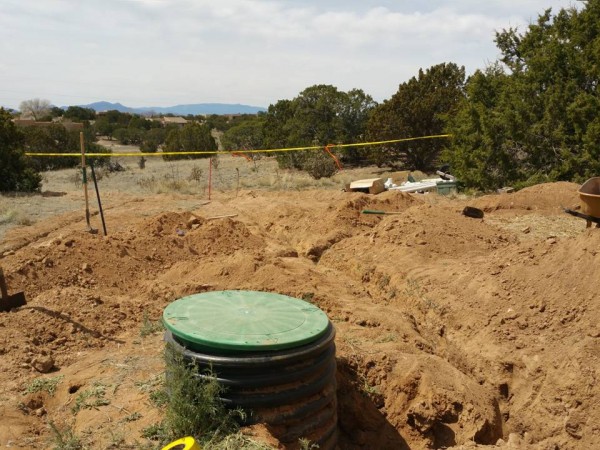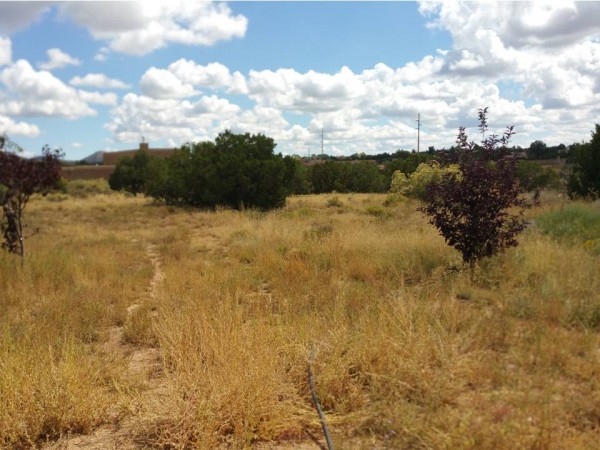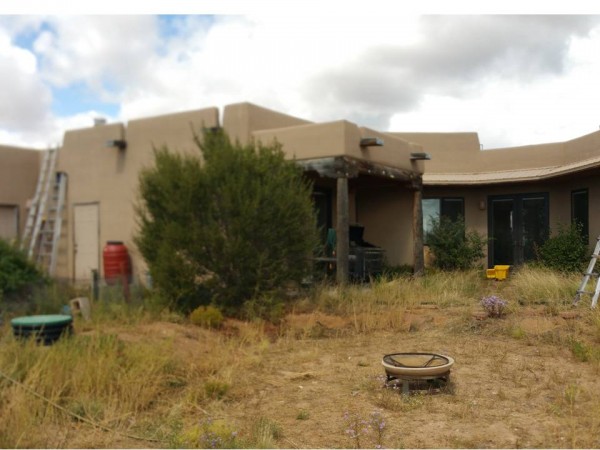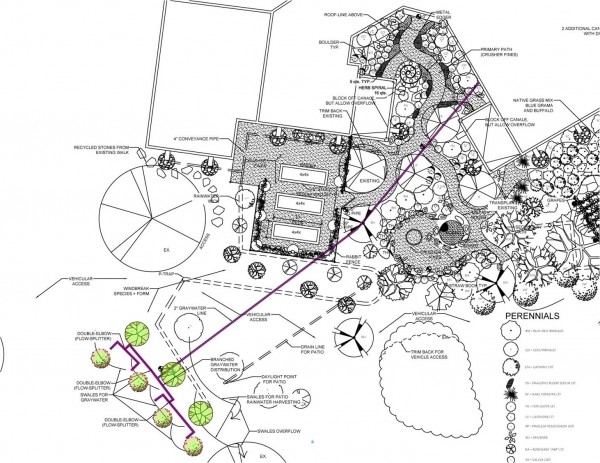The PermaDesign Weblog, with Nate Downey and Melissa McDonald!
Archives from February 2017
SLIDE 28: Wick Preparation
In addition to the greywater system that we designed and installed, the trenches in this picture were also used for a scoria-wick system as well as an subsurface gopher prevention fence for the veggie garden (shown in an upcoming slide or two).
02/28/2017 | (0) Comments
SLIDE 27: Overflow Point
The overflow of the old tank went to the leech field at the right of this slide, and in case there ever is any problem with their new system, we maintained the current septic as an overflow point.
02/27/2017 | (0) Comments
SLIDE 26: Site Before
Here is a before picture of the site. Note that the access point to the ”greywater” tank was prominent and not attractive. We were able to replace that lid as well as the underground tank with lots of pretty and productive plants.
02/26/2017 | (1) Comments
SLIDE 25: Final Destination
In this case, the client already had part of a greywater system plumbed, but it pointed toward the center of this slide into a septic tank. The idea was that the client would remove the water from the tank via a sump pump and a hose. The problem is that greywater turns to blackwater if it is allowed to sit in a tank for more than 24 hours. This technically made the previous system illegal. We came in, rerouted the greywater pipe to pop out in mulched basins as per the State of New Mexico’s regulations. (See the New Mexico Environment Department’s website, my book Harvest the Rain, other parts of this blog, and my Permaculture in Practice Archives for more info about NM’s greywater [aka graywater, grey water, and gray water] law).
02/25/2017 | (0) Comments
SLIDE 24: Branching at Work
Here is the branching pattern at work (bottom left of slide).
02/24/2017 | (0) Comments
SLIDE 23: The Main Branching Line
Here is the branching pattern at work (bottom left of slide).
02/23/2017 | (0) Comments
SLIDE 22: Greywater Plan
If you let your eyes follow the greywater pipe that run from the top right of this slide to the bottom left of this slide (dark line), you will see how the branching pattern is an important part of greywater harvesting.
02/22/2017 | (0) Comments
SLIDE 21: Branching
Branching occurs throughout nature, and it is a pattern we mimic in our ecological landscape designs.
02/21/2017 | (0) Comments
SLIDE 20: Agenda
I typically do not have time (in my hour-long presentations) to go through every pattern known to humanity, but I typically discuss branching, tessellation, weaving, layering, and containment with brief references to waves, spirals, concentric rings, and the scatter pattern. In this lecture, I focused on branching, tessellation, and three forms of containment (cisterns, waffle gardens, and wicking rain-gardens)
02/20/2017 | (0) Comments
SLIDE 19: What Do Patterns Do
Patterns are also very important because they collect, convey, store, filter, and distribute energy. In the case of water harvesting, we see these five verbs at work with respect to precipitation, but we can also see patterns in these relationships with other forms of energy both in nature and with respect to human systems and technology.
02/19/2017 | (0) Comments










